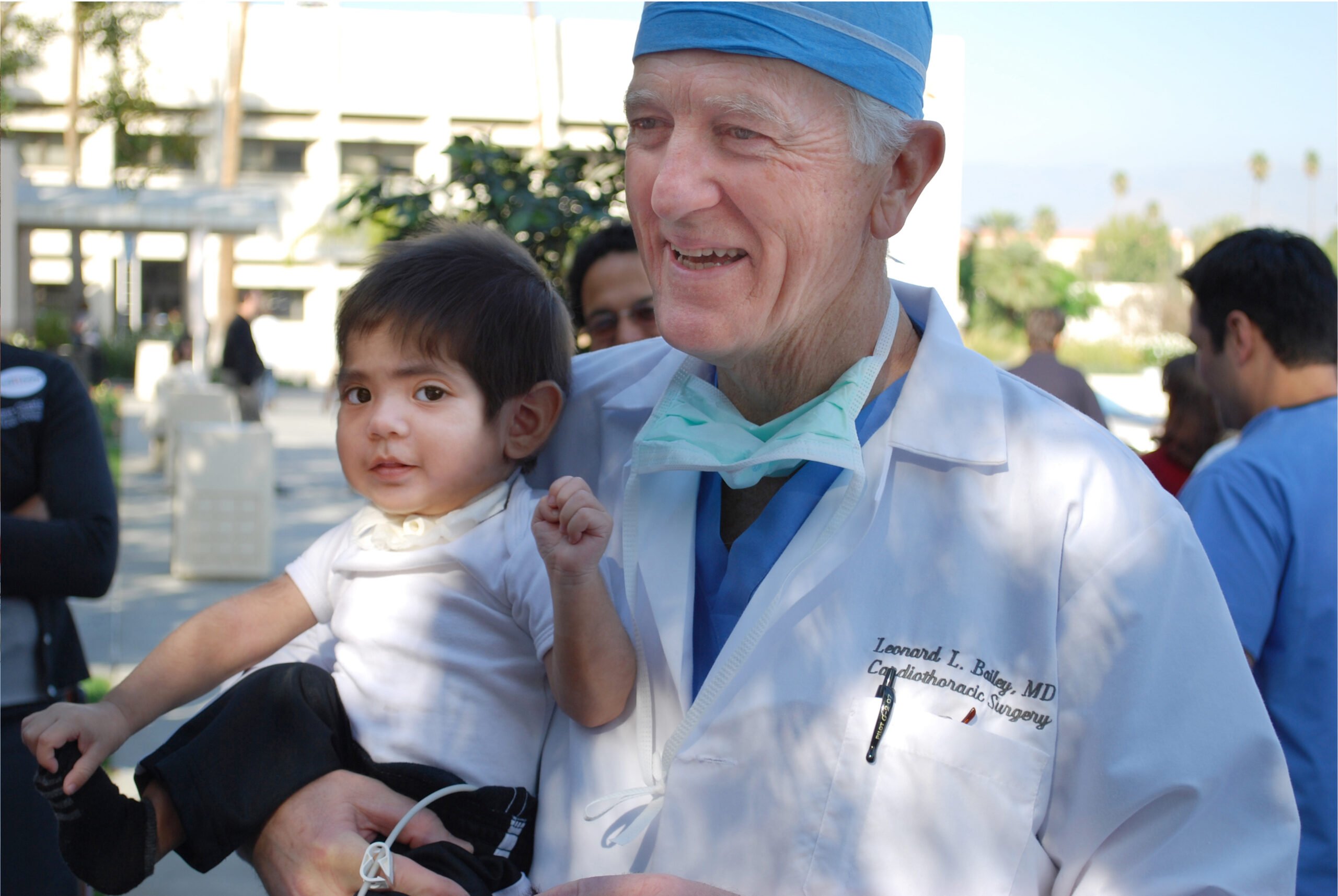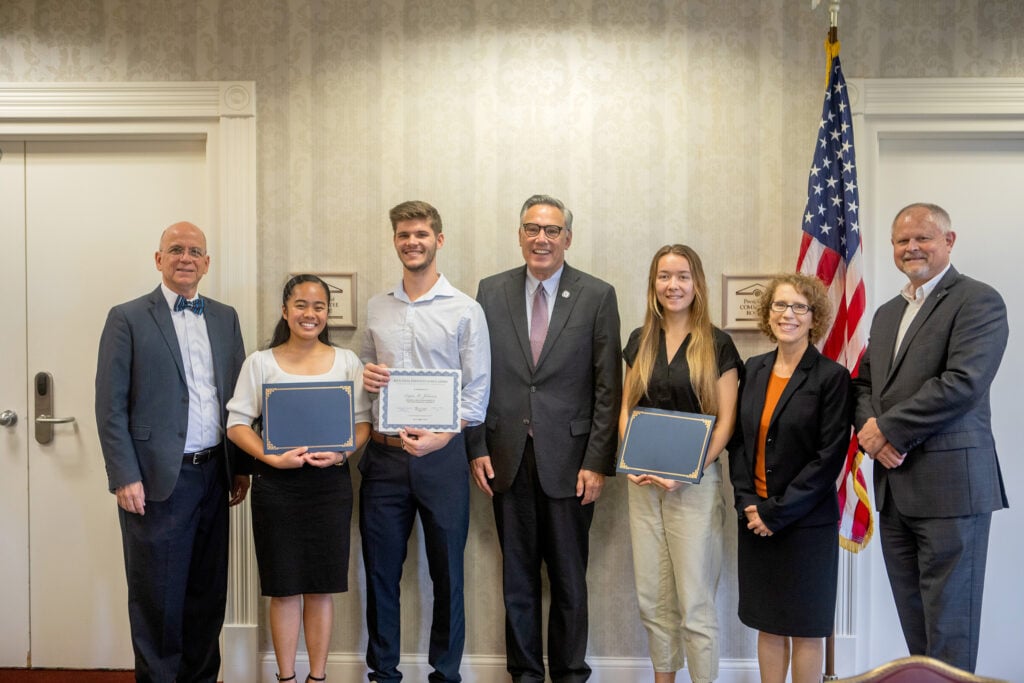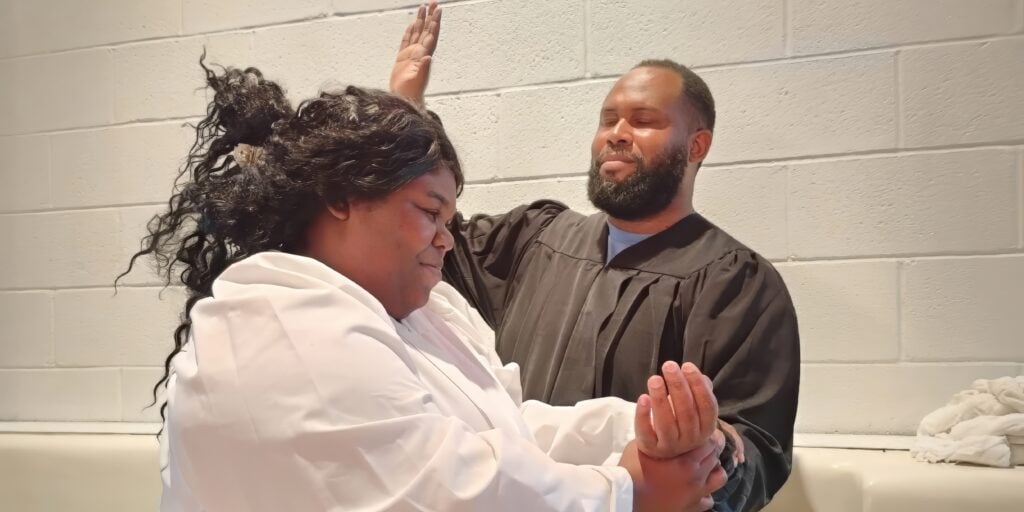Leonard Bailey, M.D., the renowned Loma Linda University Health surgeon who garnered international media attention in 1984 for transplanting a baboon’s heart into a human infant known as “Baby Fae,” the research from which spawned human-to-human infant heart transplants and other cardiac treatment breakthroughs, died on May 12, following a battle with cancer. He was 76.
Bailey’s pioneering and controversial procedure became one of 1984’s biggest news stories, drawing daily attention of national news networks to the case in which the patient died 21 days later. He went on to transplant hearts in 376 infants and became an authority on congenital heart surgery and a consultant to physicians around the world.
His work also propelled Loma Linda University Health to become the world’s leading pediatric heart transplant center and led to innovations that enable surgeons to repair certain complex congenital heart defects instead of patients having to undergo a transplant.
Bailey served as a distinguished professor of cardiovascular and thoracic surgery and of pediatrics at Loma Linda University School of Medicine and surgeon-in-chief at Loma Linda University Children’s Hospital. He served at Loma Linda University Health for 42 years.
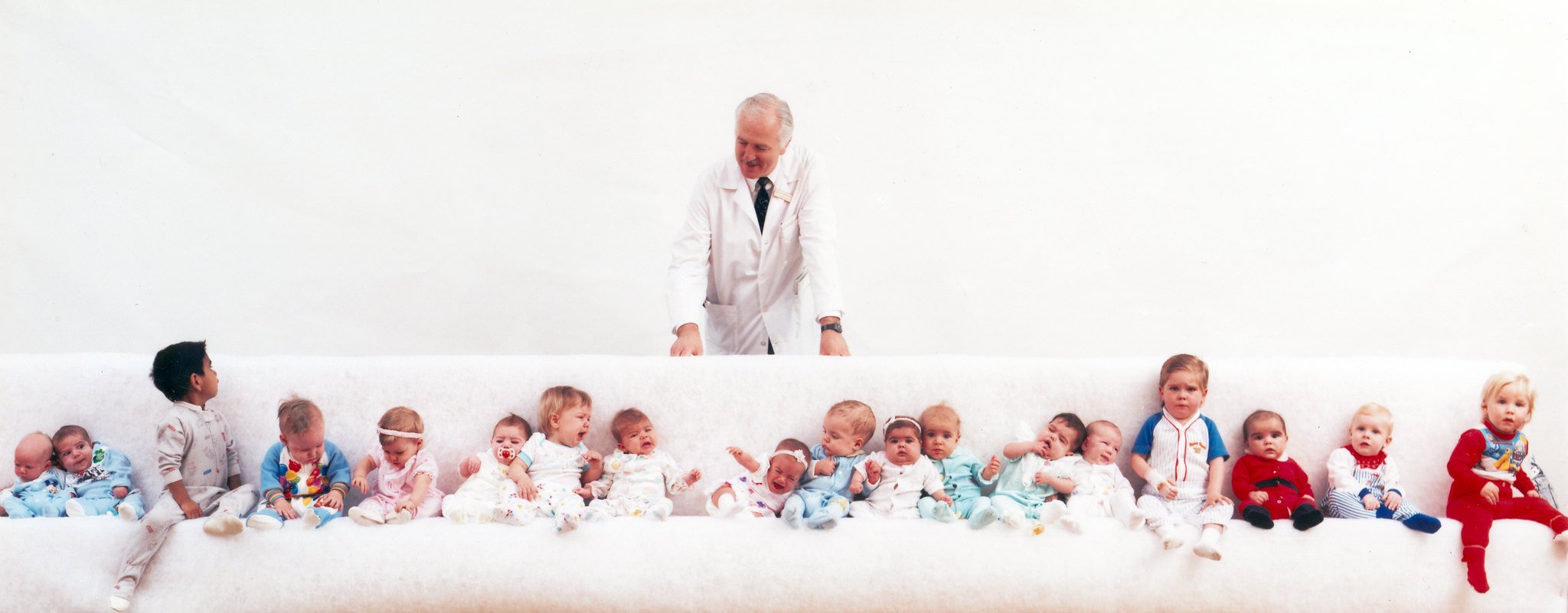
Though widely recognized for transplantations, they were only a small part of his practice, which consisted of all types of pediatric and infant open-heart surgeries.
Many of his infant heart-transplant patients came back to visit him as teenagers and adults. At least one went on to medical school.
“When we operate on these babies, the hope is that they will live longer than us. It’s nice to know that’s playing out,” Bailey said in 2017 after a 36-year-old former patient visited him. “Often when we start a case, we thank the Almighty that He has put us in this position to help and that the outcomes will be according to His will.”
While making rounds with young patients, Bailey would often wear neckties featuring Snoopy or Looney Tunes characters. “It sedates the kids a bit,” he once quipped in an interview. The surgeon was also known to change a baby’s diaper if needed.

“Our colleague and friend, Len Bailey, served this institution and the world beyond with dignity and courage,” said Richard Hart, M.D., DrPH, president of Loma Linda University Health. “Despite his fame, he was always part of our own faculty family and stood tall in later years as one of our senior statesmen. His humble demeanor and quest for quality exemplified the best of our core values.”
In “Journey Films,” an e-newsletter, friend and filmmaker Martin Doblmeier paid tribute to Bailey. “Despite all the international acclaim, Len could not have been more humble and gracious,” commented Doblmeier. “I had the privilege of filming in the operating room with Dr. Bailey and his team of specialists. It was a chance to watch the master at work. . . . For those who wonder if religion and science, faith and medicine are destined to always be at odds, one only need to look to Dr. Len Bailey — one of the great healers of the modern era.”
Early Years
Leonard Lee Bailey was born on August 28, 1942, in Takoma Park, Maryland, and graduated from the nearby Columbia Union College (now Washington Adventist University) in 1964. He later earned an M.D. from Loma Linda University School of Medicine in 1969.
It was during a thoracic and cardiovascular surgery residency at Toronto’s Hospital for Sick Children in the 1970s that he saw numerous otherwise healthy babies die from hypoplastic left heart syndrome — a congenital heart defect that defied successful reconstructive heart surgery.
He returned to Loma Linda University in 1976 to join the faculty as an assistant professor at the School of Medicine. Over the next few years he performed more than 200 experimental transplantations in infant research animals to determine the feasibility of transplantation in young mammals.
Pioneering Surgery
In 1984, Teresa Beauclair visited Loma Linda University Medical Center with her infant daughter Stephanie, who suffered from hypoplastic left-heart syndrome, an underdevelopment of the heart’s left side.
“In those days, the advice to parents was to leave the baby here to die or take it home to die,” Bailey recalled in a 2009 interview.
Beauclair made the decision to allow the experimental surgery on her daughter after hospital staff had given her the phone number for the coroner.
The patient’s middle name, Fae, was chosen to provide anonymity for her and her mother (Beauclair revealed her identity to the public in 2009).
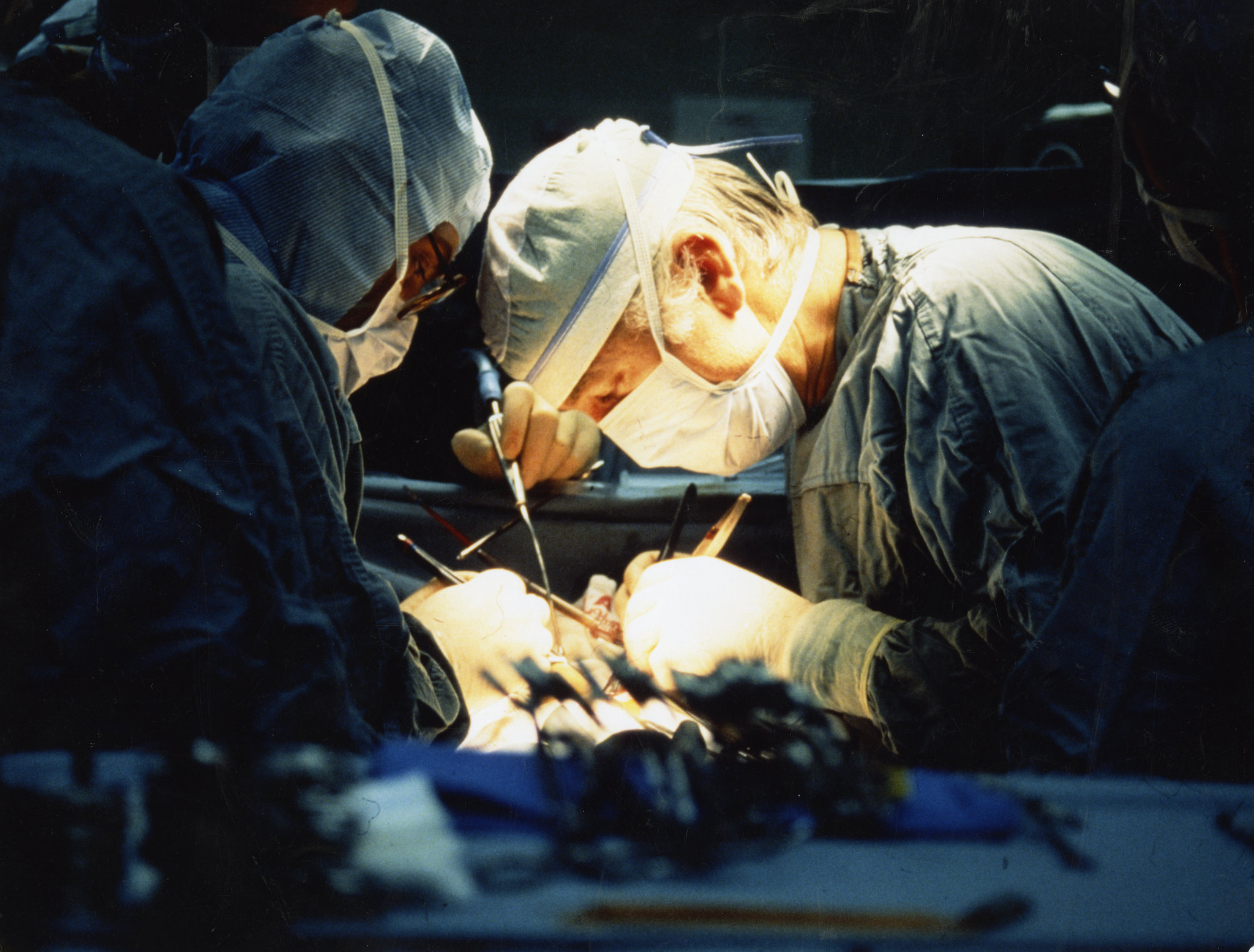
On October 26, 1984, Bailey and his team transplanted a baboon’s heart into “Baby Fae,” as she became known to the media. The procedure sharply divided the medical community and brought protest from animal rights groups, some of which sent protestors to the university and called the procedure “ghoulish tinkering” with human and animal life, media reports stated.
But the procedure had widespread support, too. “It amazes me that 90 percent of us can enjoy a juicy steak, paté de foie or a good joint of lamb and not face protesters at the meat market,” stated a letter to the editor of Montreal’s Gazette, “[but] use a baboon’s heart to save the life of a child, however, and suddenly we are told that we all need a lesson in compassion for animals.”
Loma Linda University Health historian Richard A. Schaefer recalled that university press officers invited Beauclair to attend several of the news conferences in Randall Amphitheater. They protected her anonymity by providing her a lab coat and having her stand with doctors on the sidelines.
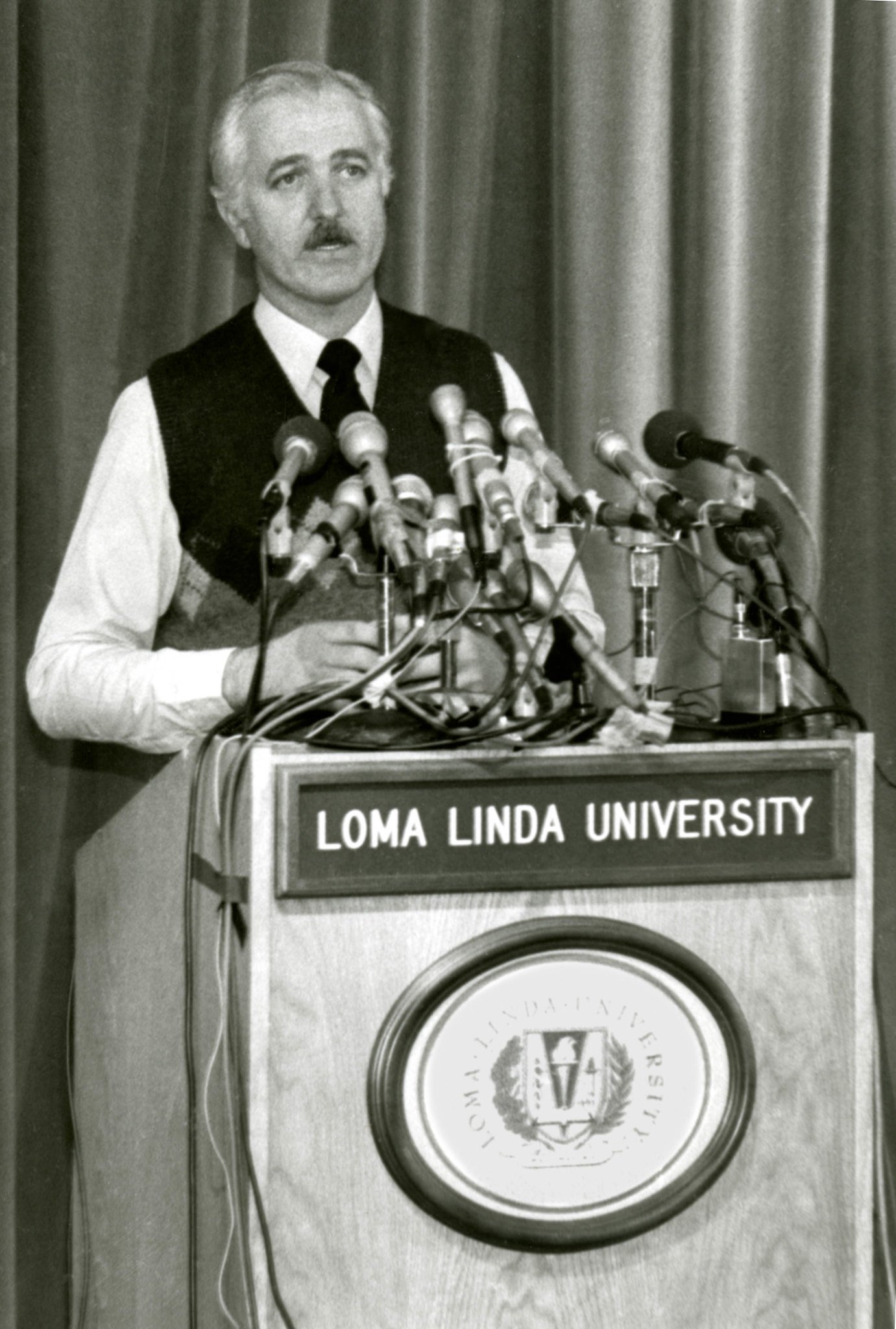
Baby Fae lived for 21 days, two weeks longer than any other previous inter-species transplant recipient.
The evening of Baby Fae’s death, Beauclair told Bailey she didn’t want her daughter’s surgery to have been in vain and pressed him to keep on with his work, as she recalled in the 2009 documentary Stephanie’s Heart.
The next day, 41-year-old Bailey spoke at a news conference. Time magazine reported him as fighting back tears and saying, “Infants with heart disease yet to be born will someday soon have the opportunity to live, thanks to the courage of this infant and her parents.”
The research from Baby Fae’s case paved the way for Bailey and his team to make the world’s first human-to-human heart transplant in a child a year later.
Bailey is survived by his two sons. His wife Nancy preceded him in death on April 7.
Click here to watch video excerpts from Martin Doblmeier’s documentary “The Adventists,” as included in the “Journey Films” e-newsletter.
